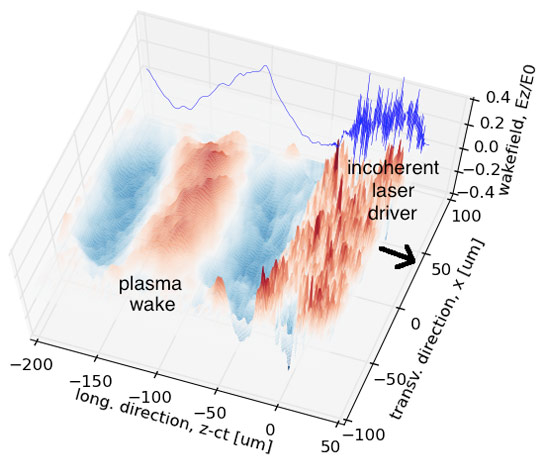Miniaturization has become a hallmark of modern technological advancement, adapting complex systems into more manageable and efficient forms. While this trend is evident across numerous fields, the prospect of miniaturizing particle accelerators represents a particularly fascinating frontier in the realms of physics and engineering. The question of how long it will take to achieve compact accelerator designs warrants comprehensive exploration, given the implications such an endeavor holds for scientific research, medical applications, and industrial uses.
Particle accelerators, devices that propel charged particles, such as electrons and protons, to high speeds, facilitating collisions that generate a plethora of fundamental particles, are traditionally large and intricate installations. The Large Hadron Collider (LHC), for instance, spans 17 miles in circumference, situated beneath the Franco-Swiss border. Such monumental apparatuses are critical in unraveling the mysteries of the universe and spearheading cutting-edge research in particle physics. However, their size, cost, and operational complexity pose significant barriers to entry for many research institutions and developing countries.
To scrutinize the timeline for miniaturization, it is essential to understand the underlying technologies and methodologies that currently exist. Conventional accelerators utilize electromagnetic fields to accelerate charged particles along beamlines, relying heavily on substantial infrastructures. In contrast, emerging technologies draw from plasma physics, laser technologies, and advanced superconducting materials, which offer alternative pathways to achieving acceleration in a condensed form.
One promising avenue is the development of laser-driven particle acceleration, commonly referred to as laser wakefield acceleration (LWFA). This technique employs high-intensity lasers to create plasma waves in a medium, with particles surfing these waves to gain energy. Research indicates that LWFA can achieve particle energies on par with conventional accelerators while occupying merely a fraction of the space. Experimental setups conducted in laboratory settings have already achieved energy levels of several GeV (giga-electronvolts) over a distance of a few centimeters, accentuating the potential of compact accelerators.
Another pivotal technology is the use of dielectric structures, known as dielectric laser acceleration (DLA). These structures can accelerate particles by utilizing high-frequency electromagnetic fields generated in thin dielectric materials. Initial experiments have demonstrated that DLA can accelerate electrons over short distances, and iterative improvements in material science and engineering could yield increasingly efficient and powerful designs.
While these innovative technologies are promising, commercial viability remains an important criterion. Industrial challenges associated with laser precision, system reliability, and long-term stability need to be addressed. The complexities involved in creating a compact accelerator that maintains output quality and safety protocols similar to larger facilities introduce a timeline ambiguity. Some experts predict that within the next decade, significant strides could render compact accelerators operational for specific applications, such as materials science and medical therapies, while others suggest that broader use may require an additional 20 to 30 years of research and development.
In parallel to technological advancements, market demand plays a crucial role in the trajectory of particle accelerator miniaturization. The burgeoning field of medical physics, particularly in cancer treatment through particle therapy, is an area where compact accelerators are already gaining traction. Proton therapy systems, which harness proton beams for precise targeting of tumors, show promise for being adapted into smaller formats. Streamlined systems, adaptable for use in regional clinics, could drastically improve patient access to treatment, highlighting the urgent need for accelerated timelines.
Moreover, the intersection of miniaturized particle accelerators with emerging technologies, such as artificial intelligence and machine learning, cannot be understated. Integration of complex algorithms to optimize accelerator performance and troubleshooting could significantly hasten development. These advanced computational methods can not only streamline design and operational efficiencies but also facilitate real-time adjustments to maximize output, thus proving critical in pushing forward the timeline for miniaturization.
In addition to practical applications, there are profound implications for fundamental research. Compact accelerators could democratize access to particle physics investigations, enabling smaller institutions, universities, and even developing nations to engage in groundbreaking research. This equitable extension of opportunities could catalyze new discoveries and reduce the barriers to entry for a diverse array of scientists and innovators around the world.
Nevertheless, the path forward is fraught with challenges, not least rigorous regulatory standards and safety protocols associated with accelerator operations. As miniaturized designs undergo trials and testing, stakeholders must navigate a complex landscape of governmental and institutional oversight. Proactive dialogues between scientists, engineers, and policymakers will cultivate an environment wherein innovation can thrive while ensuring that public safety remains paramount.
Ultimately, the journey to miniaturized particle accelerators encapsulates a confluence of advanced physics, cutting-edge engineering, and visionary planning. While optimistic predictions hint at the potential for operational compact accelerators in the next decade, the reality may unfold gradually, influenced by technological advancements, market dynamics, and collaborative synergies among disciplines. As advancements continue to emerge, the scientific community remains vigilant in its quest to push the boundaries of what is possible, captivating the imagination and igniting curiosity for future generations of physicists and engineers.












